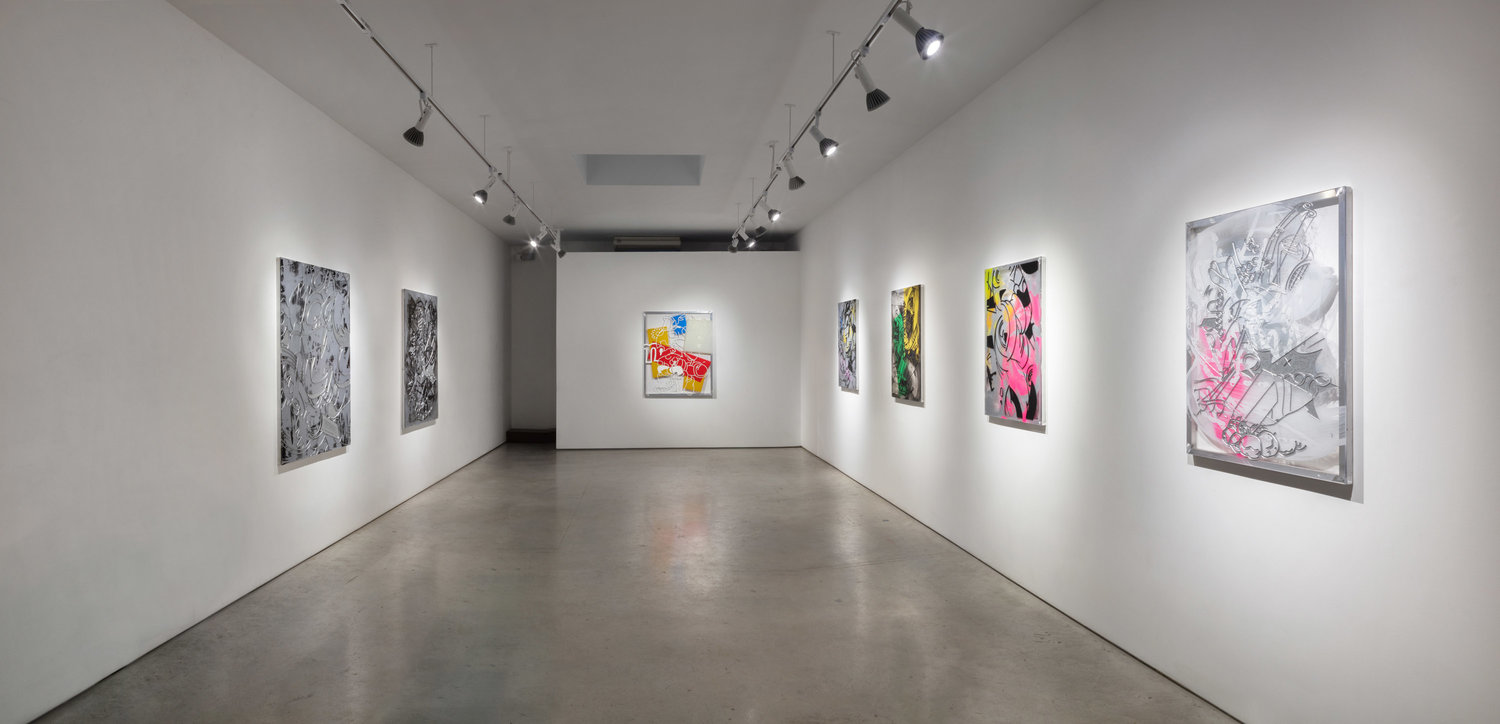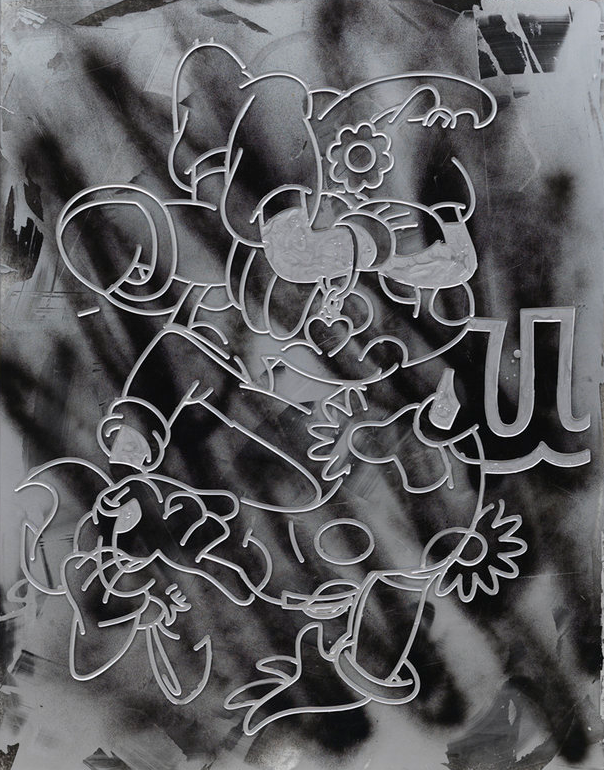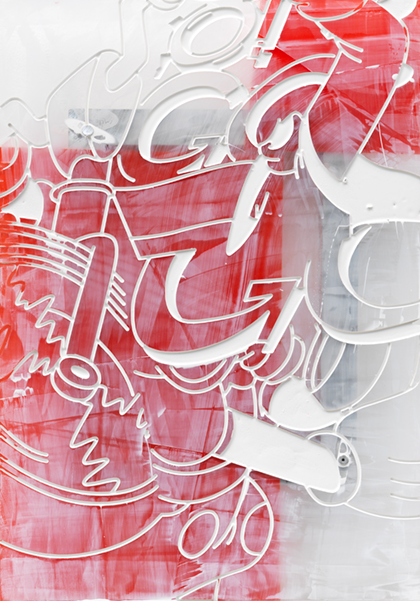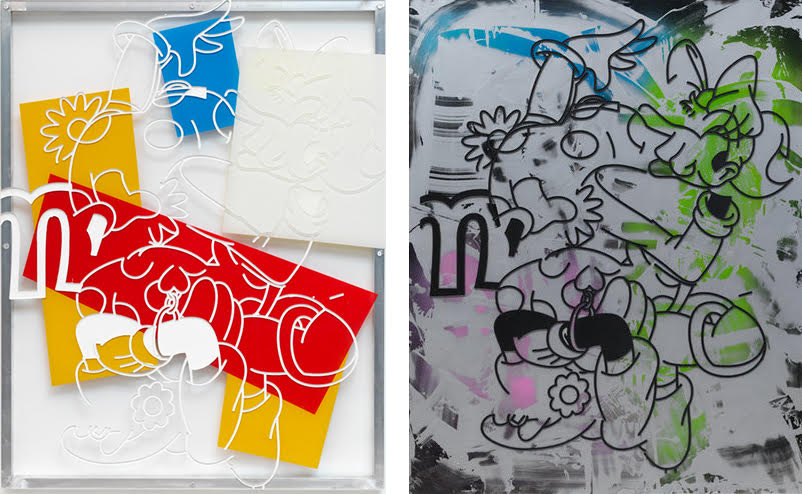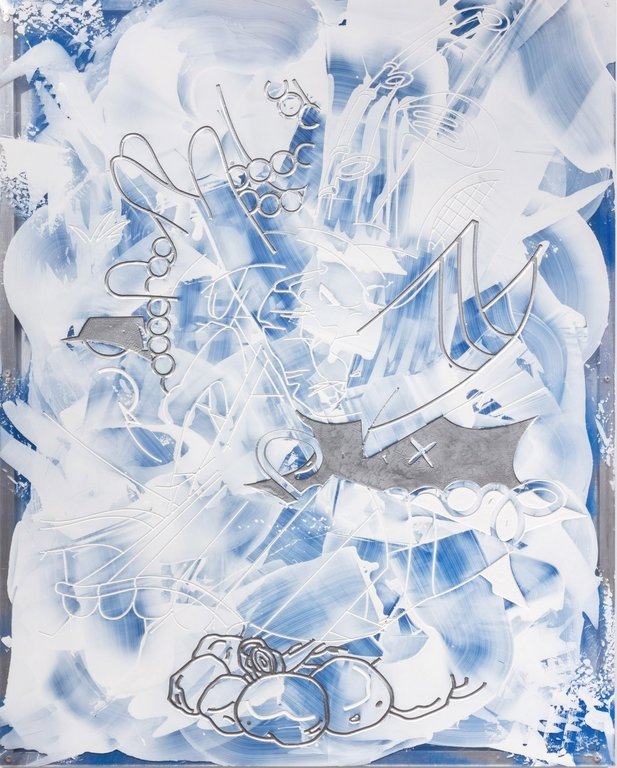It’s an evocative title. Silver Harley conjures the sinewy curves of chromed pipes and machinery; the near sub-sonic growl of a motorcycle engine. It’s a title that works well for this show of unusual paintings.
Installation view of Joe Fleming, Silver Harley at General Hardware Contemporary. Photo: Laura Findlay
Maybe ‘paintings’ is too narrow a category. Although they conform to the traditional, rectangular wall space, they may be more aptly described as constructions, or wall-mounted sculpture: ‘paintings++’. As you step closer, the surfaces become more complex. There is depth to them. Areas are partially and sometimes completely transparent. What are they made of? Curiosity pulls you in closer. There’s paint on both sides of a thick transparent material. Grooves have been cut into the surface and are partially filled with paint. Shadows on the wall behind become yet another layer of depth. You find yourself pulled in, just a few inches away from the surfaces figuring this all out. It’s this physical presence that makes them more things than images; that gives them their ‘Harleyness’.
Silver Harley, detail. (The surface depth does not fully translate on the photographs)
As you stand back, you discover that the markings are not random. There are images here, but they are fragmentary and complex. There are parts of cartoon figures and objects as well as graphic elements that look like letters or arrows. The effect is reminiscent of a comic book fight: a dust-cloud with arms and legs appearing at the edges. You can’t help but try to decipher these images, but they remain mysterious and only partially legible. The difficulty reading these complex images echoes the initial experience of understanding the material surface: you don’t see it all at once and the process feels like a series of little discoveries.
Untitled, 2019, enamel on polycarbonate, 36″ x 28″
The making of the pieces in Silver Harley involved several steps. The initial work was done on paper, cutting up and rearranging a series of cartoon illustrations. These collages were then scanned and transformed into graphic line art. As digital files, these graphics were used to control a computerized router that engraved the images into the polycarbonate sheets. Fleming then worked both the front and back surfaces with paint and, in some cases, power tools. The routered grooves on the front trap paint and create thick, smooth graphic lines. The paint on the back is applied in a variety of ways: as spray paint, as thick and wide brushstrokes and as solid constructivist shapes. Other layers are partially scraped off leaving a hazy translucent surface.
Untitled, 2019, enamel on polycarbonate, 20.5″ x 14.5″
Fleming’s methods allow us to follow the various decisions and choices that he makes along the way. Because the material is transparent, everything shows. The order of the application of each layer of paint is visible. The paint on the back reveals the first gestures on top with subsequent applications behind. Fleming has to be completely confident in his paint handling. Nothing can be ‘covered up’ in this process; no finicky touch-ups. Whatever went down first, stays on top.
The result can be transparent and crisp as in Micah’s Melody or almost completely opaque as in Silver Touch. As different as they ended up, these two images started with the same engraved graphic.
Micah’s Melody, 46″ x 38″ (left) and Silver Touch, 50″ x 40″, both enamel on polycarbonate, 2019
Fleming has used technology to re-invigorate the perennial art of painting. Computers, power tools and construction materials have been pressed into service alongside the traditional paint and brush. The work is firmly rooted in the history of modernist painting with elements of both abstract expressionism and pop art. In this sense, Fleming is part of a long line of artists such as Sigmar Polke, John Baldessari, and Albert Oehlen, who have enriched the painting tradition by mixing in new materials and technologies.
Glamping, 2019, enamel on polycarbonate, 50″ x 40″
With innovative processes, there is always the risk that the technique hijacks the work; that it distracts the artist from their original vision. Fleming maintains control and does not let the technology dictate the terms. To paraphrase Oehlen, Fleming ensures that the artist has the last word, not the technology.
Mikael Sandblom
Images are courtesy of General Hardware Contemporary
Exhibition information: June 13 – July 20, 2019, General Hardware Contemporary, Front Gallery, 1520 Queen Street West, Toronto. Gallery hours: Wed – Sat, 12 – 6 pm.

